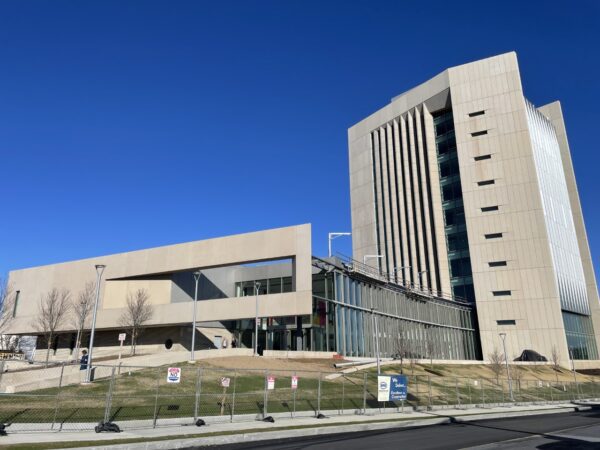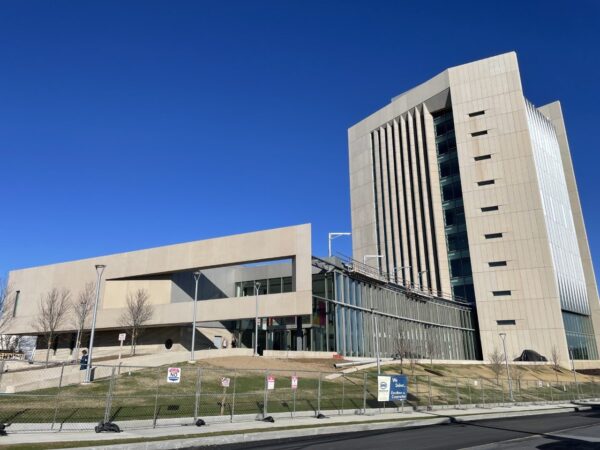
July 15, 2024 | Articles
Construction’s Digital Transformation & The Tools of Modern Project Management


On December 9, the U.S. General Services Administration (GSA) celebrated a ribbon cutting ceremony for the $200 million Sylvia H. Rambo U.S. Courthouse. This 243,000 gross square foot facility helps meet the U.S. District Court for the Middle District of Pennsylvania’s 30-year space requirements with eight courtrooms, eleven judges’ chambers, jury facilities, holding cells, and secured indoor and outdoor parking. The courthouse is named after the Honorable Judge Sylvia H. Rambo, who has served as a judge for the Middle District since 1979 and is the first woman to have served as chief judge of the Middle District. The facility replaces Harrisburg’s Ronald Reagan Federal Building and U.S. Courthouse, constructed in the 1960s with only four courtrooms and now outdated security systems. Tenant agencies include Middle District of Pennsylvania and Bankruptcy Courts, U.S. Marshals Service, U.S. Attorneys, U.S. Trustees, Homeland Security, Federal Public Defender, and GSA.
The building is a steel structure with a precast concrete envelope, vertical glazing, and stone details. In addition to meeting the court’s 30-year space requirements, the building is on track to reach LEED Gold standards and meets the GSA Public Buildings Service Facility Standards and U.S. Marshals Service Publication 64 requirements and specifications for security, safety, and health. This includes requirements for blast resistance, progressive collapse, security controls, prisoner exchange, and secure corridors. The facility also includes infrastructure to enable the latest technology for courtrooms as well as the flexibility to accommodate future enhancements. In addition, the building was designed to accommodate natural light, from the 30-foot glazed panels in the entryway to the intricately angled glass fiber reinforced concrete fins that allow natural light into the elevator lobbies.
The project team, including designer Ennead Architects, contractor Mascaro Construction, and project and construction manager Hill International, used Ennead’s building information modeling (BIM) model as a management tool to increase collaboration and promote project success. Specifically, the team used the model for design reviews, discipline coordination, constructability reviews, quantity take-offs, and to proactively identify and address challenges. This helped foster discussion and resolve challenges quickly.
“Our team leveraged BIM to verify all work conformed with GSA’s specifications and federal government facility standards, giving GSA confidence and reducing the need for rework,” explains Hill Vice President David Rupp. “There were many sub-contractors on the project, so Hill and Mascaro also used BIM to confirm sub-contractor sequencing was appropriate. This further reduced rework and helped the team support cost and schedule goals.”

According to Rupp, the BIM model also helped the team manage change. When Mascaro or any of the building’s tenants proposed changes, he says, Hill’s management team reviewed the changes, communicated them to GSA, and worked with Ennead to help the team visualize the changes in BIM. Hill also used BIM during peer quarterly reviews to demonstrate project updates and provide space visualization to GSA and other stakeholders. These reviews were particularly important during the early stages of COVID-19, allowing the team to drive progress virtually and mitigate delays induced by pandemic-related labor and supply-chain shortages.
Unfortunately, COVID-19 caused unprecedented delays and contributed to multiple change orders. Leveraging the capabilities of BIM helped mitigate some of these delays and allowed the team to nimbly react to changes throughout the project. BIM also facilitated communications and collaboration, fostering positive relationships within the project organization, helping limit disputes, and reducing the possibility of claims. Despite delays, the project team persisted and delivered the high-quality project that GSA and the U.S. District Court envisioned.
Share

July 15, 2024 | Articles
Construction’s Digital Transformation & The Tools of Modern Project Management

July 10, 2024 | Articles
GC/CM at Post Falls: Managing Avista’s North Channel Dam Rehabilitation Project

June 23, 2024 | Articles
Irv Richter – An Innovator, A Pioneer, A Leader (1944 – 2024)

June 14, 2024 | Articles
Environment of Care Standards – Meeting the Challenge (Part Two)

June 13, 2024 | Articles
PMO for Public Transit Project Success: The Reopening of Philadelphia’s Franklin Square Station

June 7, 2024 | Articles

May 17, 2024 | Articles
Hill Interim Federal Market Sector Leader Jane Penny Receives Golden Eagle Award

April 11, 2024 | Articles
A Model Move: Managing Move-In at the Sylvia H. Rambo U.S. Courthouse
We and use cookies and other tracking technologies to improve your experience on our website. We may store and/or access information on a device and process personal data, such as your IP address and browsing data, for personalised advertising and content, advertising and content measurement, audience research and services development. Additionally, we may utilize precise geolocation data and identification through device scanning.
Please note that your consent will be valid across all our subdomains. You can change or withdraw your consent at any time by clicking the “Consent Preferences” button at the bottom of your screen. We respect your choices and are committed to providing you with a transparent and secure browsing experience.
| Cookie | Duration | Description |
|---|---|---|
| cookielawinfo-checbox-analytics | 11 months | This cookie is set by GDPR Cookie Consent plugin. The cookie is used to store the user consent for the cookies in the category "Analytics". |
| cookielawinfo-checbox-functional | 11 months | The cookie is set by GDPR cookie consent to record the user consent for the cookies in the category "Functional". |
| cookielawinfo-checbox-others | 11 months | This cookie is set by GDPR Cookie Consent plugin. The cookie is used to store the user consent for the cookies in the category "Other. |
| cookielawinfo-checkbox-necessary | 11 months | This cookie is set by GDPR Cookie Consent plugin. The cookies is used to store the user consent for the cookies in the category "Necessary". |
| cookielawinfo-checkbox-performance | 11 months | This cookie is set by GDPR Cookie Consent plugin. The cookie is used to store the user consent for the cookies in the category "Performance". |
| viewed_cookie_policy | 11 months | The cookie is set by the GDPR Cookie Consent plugin and is used to store whether or not user has consented to the use of cookies. It does not store any personal data. |


